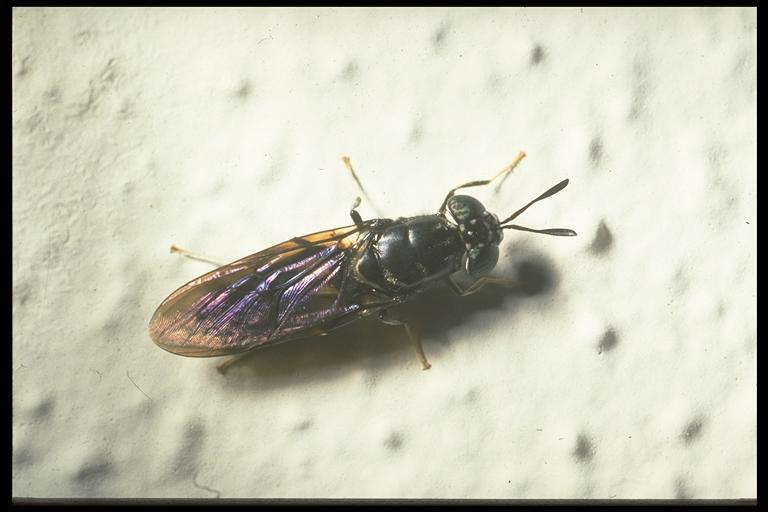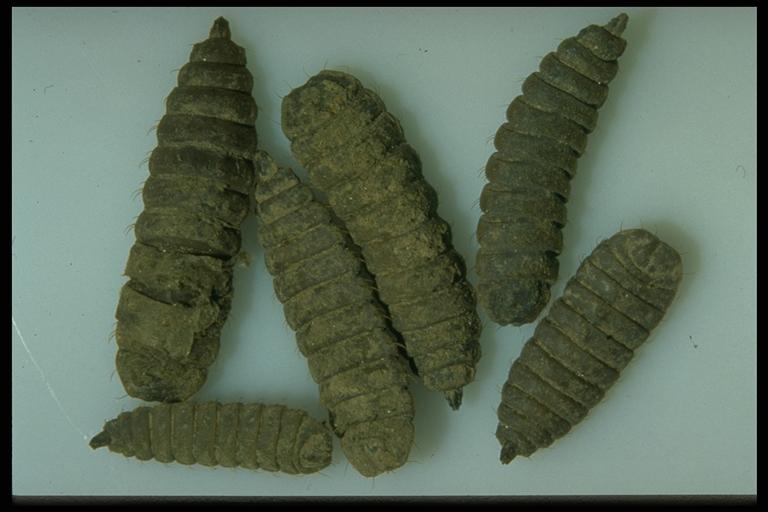
Black soldier fly, Hermetia illucens Linnaeus (Diptera: Stratiomyidae), adult. Photo by Drees.
Common Name: Soldier fly
Scientific Name: Hermetia illucens Linnaeus
Order: Diptera
Description: Adult flies are robust, 5/8-inch long, black flies with smoky black wings. Wings are held over the back when at rest. The first abdominal segment has clear areas. Larvae are torpedo-shaped and flattened, with skin (exoskeleton) appearing firm and tough. The head is small and narrower than the body and the body bears no legs or other features except hairs and spines. The back of the body is blunt and bears breathing pores (spiracles).
Other Stratiomyidae vary in color from black to metallic blue, green and purple or black and yellow patterns. They have characteristic “elbowed” antennae due to a long terminal segment. Larvae are generally aquatic or semi-aquatic, feeding on algae, decomposing organic matter or on aquatic organisms. A few species are found in dung or in decaying fruit, vegetables or under the bark of rotting wood. Larvae of some species bear a rosette of hairs around the back end of their bodies used to float on the water surface and obtain air.

Black soldier fly, Hermetia illucens Linnaeus (Diptera: Stratiomyidae), larvae. Photo by G. McIlveen, Jr.
Life Cycle: Larvae hatch from eggs and develop through several stages before pupating inside of the last larval skin.
Habitat and Food Source(s): Larvae have chewing mouthparts. Adult flies are commonly trapped indoors and are found around windows as they try to find an exit. Outdoors, they occasionally “buzz” by, but are otherwise rarely encountered. Larvae feed on decomposing organic matter, mold and algae. Hermetia illucens (Linnaeus) is commonly encountered indoors in bathrooms, kitchens, outdoor latrines and earthworm beds. Larvae have also been extracted form carrion, and there are reports that the larva has been accidentally swallowed with contaminated food, causing myiasis (infestation within the body).
Pest Status: Adults superficially resemble wasps, but have no stinger and are harmless; larvae occasionally occur indoors when they breed in organic matter where faulty plumbing or another source of moist matter in present; larvae usually go unnoticed until they leave the larval habitat and crawl around the room in search of a drier pupation site.
For additional information, contact your local Texas A&M AgriLife Extension Service agent or search for other state Extension offices.
Literature: Goodwin & Drees 1996; James & Harwood 1969.